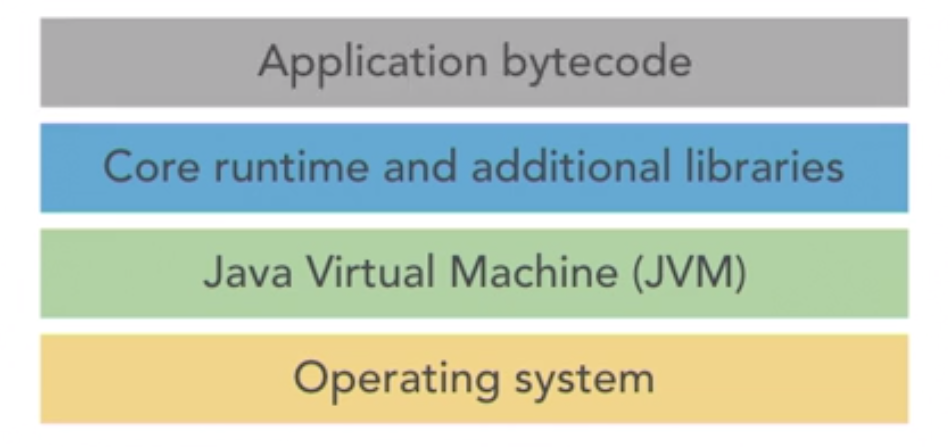Introduction to Java programming language

Java is a high-level programming language characterized for being simple, object-oriented, robust, secure, dynamic, portable, and multithreaded. The source code is composed of plain text files with the extension .java. These files are compiled by the javac compiler that converts them into bytecodes so that the JVM (Java Virtual Machine) can translate them into binary code and the machine can finally interpret them. Therefore, only a copy of the JVM needs to be installed on any device to run Java programs, which is the supremacy of its portability.

Java as a platform encompasses the software environment that can be run on Windows, Linux, Solaris OS, and Mac OS. The Java platform is composed of:
- The JVM (Java Virtual Machine)
- The API (Application Programming Interface)
As we already saw, the JVM is responsible for converting the code of the applications into binary code necessary for each processor to execute it. Meanwhile, the Java API is a set of functions, methods, and classes available in software packages that provide the basic functionality in Java applications.
Architecture
The Java platform begins with the client operating system on which the JVM runs. There are different implementations of the JVM, among which is Oracle's. Above the JVM is the Core Runtime and other libraries, and finally, at the top is your application's bytecode, which has been compiled from your Java code.

Java Runtime Environment
Java Runtime Environment (JRE) is the program's execution environment made in Java. The JRE includes the Java virtual machine (JVM). If you ever downloaded a program made in Java, to run this program, you must have the JRE installed.
Java Development Kit
Java Development Kit (JDK) is the set of utilities required to develop programs in the Java language. It contains, for example, the javac command, which converts the source code (.java files) into bytecode.
Java Editions
There are different versions of Java that depend almost exclusively on the environment where we want to run an application. Below you will find a very concise description of each one.
- Java Platform, Standard Edition (SE)
- Base language (core) and Java Runtime Environment (JRE).
- Java Platform, Enterprise Edition (EE)
- Recommendation for really powerful and robust applications. Oracle no longer maintains Java EE, it was donated to Apache and it is now under the name of Apache Jakarta EE.
- Java Platform, Micro Edition (ME)
- This version is a subset of Java SE with libraries specifically designed to work with microcontrollers, sensors, and mobile devices.
- Java FX
- Especially designed for desktop, mobile, and embedded systems applications. Java FX allows you to create and deploy applications with a cutting-edge look and with advanced content, sound, and video.